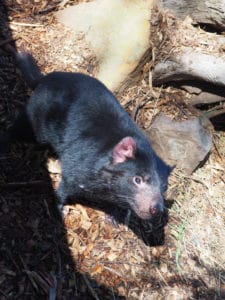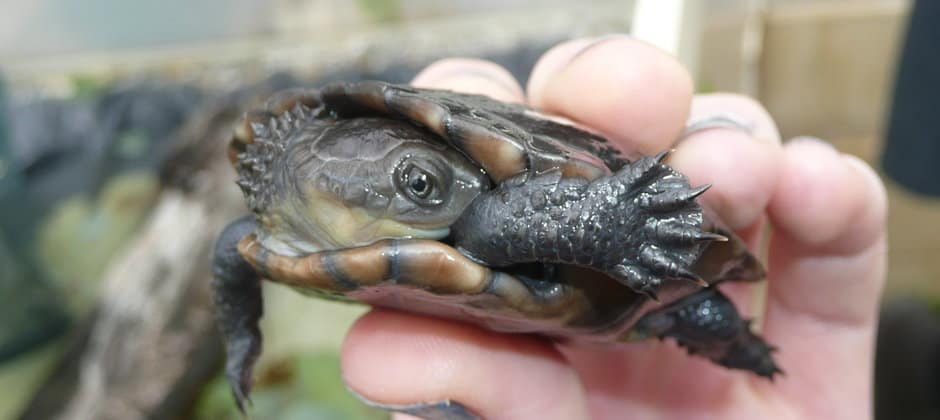Share this article
Q&A: ‘Unprecedented change’ erodes notion of natural range
According to traditional biology books, birds travel within geographic boundaries they’ve carved for millennia, while amphibians are found in a set series of ponds and lakes.
But these are unprecedented times. Birds are migrating earlier, possibly in response to insects emerging earlier in the spring. Polar bears (Ursus maritimus) spend more time on land as the ice they hunt on melts earlier. Lizards in Joshua Tree National Park are climbing to higher elevations. Meanwhile, a whole host of animals are being squeezed out of their habitats due to expanding cities, livestock and agriculture, energy development and pollution — whether chemical, light or noise.
Kit Prendergast, a PhD candidate in ecology at Curtin University in Australia, recently penned a forum piece in Austral Ecology titled “Critiquing the notion of a species natural range in an era of unprecedented change.” We connected with her to talk about how traditional ideas of natural ranges are changing. The interview is edited for brevity and style.
What types of factors are affecting species’ natural ranges?

Kit Prendergast is a PhD candidate at Curtin University in Australia.
Credit: Des Lewis (Mondo Photography)
A species’ natural range is determined by conditions where it can successfully survive and reproduce. This includes both biotic and abiotic factors. The temperature needs to be in a suitable range the species is adapted to, with a suitable climate. There must be suitable food and nesting resources for animals; suitable soil conditions for plants, and for animal-pollinated flora, their pollinators must be present. Species are in webs of interacting species. Some need mutualists to co-occur in time and space. Parasites require hosts to present spatially and temporally. Threatening processes (environmental catastrophes, disease, predators, toxins, etc.) need to be below levels that would cause population extirpation.
Climate change may cause species ranges to no longer be suitable (too warm). Likewise, habitat loss may cause areas to no longer meet the requirements of populations. Human-created problems like salination may cause soils to become so saline that plants may no longer be able to grow in areas they used to inhabit. Introduced species (predators, pathogens, diseases, weeds) may mean that species are unable to occur in areas they once did.
How is the notion of natural species range changing due to these factors?

Tasmanian devils (Sarcophilus harrisii) are considered as a candidate for relocating to areas outside of its recent historic range to avoid extinction from transmissible devil facial tumour disease, as well as restore an apex predator to control cats.
Credit: Kit Prendergast
A natural species range is not changing due to these factors, but rather, due to unprecedented conservation challenges facing wildlife today. The notion of only re-introducing species, or keeping species, within their “natural” or “historic” range may not be a viable strategy. Firstly, a species’ historic distribution may no longer be suitable under current and future conditions — the ecological conditions may no longer be suitable. In contrast, the right habitat requirements may be suitable for species in areas they historically have never occupied, and thus introducing them to such areas may be necessary for their survival. Species with key ecological roles — ecosystem engineers, important pollinators, plants that provide key food or habitat, keystone predators, species that provide biological control or soil remediation — may be introduced to restore ecosystem functioning when species that previously fulfilled these roles have become extinct.
What kind of broad scale ecological changes may occur because of this?
Not only may species become locally extinct due to these environmental perturbations in their natural range, but local extirpations may have cascading impacts. For example, loss of apex predators may cause mesopredator release. Loss of keystone frugivorous species may impair seed-dispersal. And loss of key pollinator species can disrupt plant-pollinator networks.
Why might traditional ecological thinking on species range be problematic considering climate change?
We are undergoing a period of unprecedented climatic changes at rates not currently experienced in species’ evolutionary histories. Regions where species naturally occur may no longer be suitable. Most species are unable to adapt or migrate at a rate to keep within their thermal niche. Introducing species to regions that are within their thermal niche, yet outside of their natural range, may be necessary to prevent extinction.
Header Image: The western Swamp tortoise (Pseudemydura umbrina), was introduced to areas south of its historic distribution in Australia so as to prevent extinction due to climate change. Courtesy: Kit Prendergast








